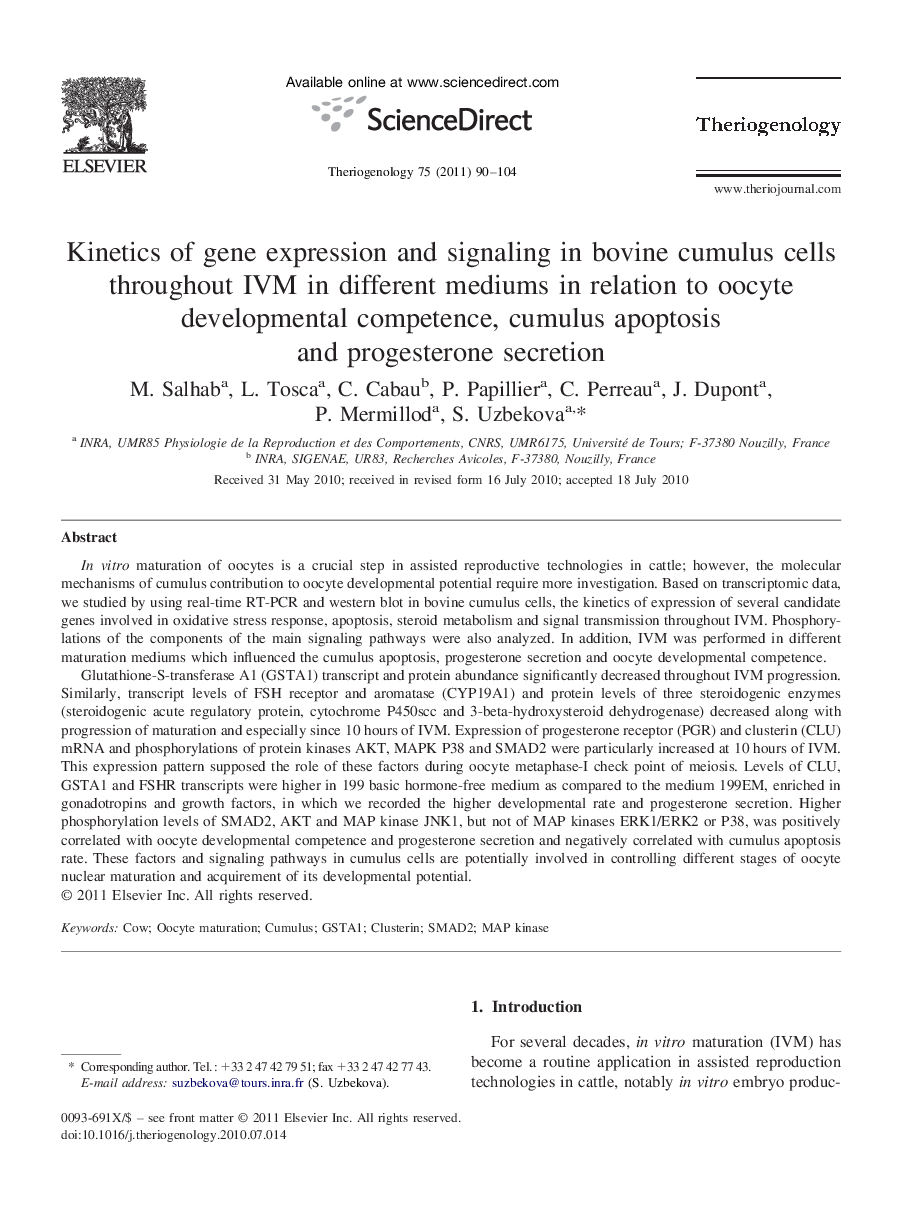| Article ID | Journal | Published Year | Pages | File Type |
|---|---|---|---|---|
| 2095504 | Theriogenology | 2011 | 15 Pages |
In vitro maturation of oocytes is a crucial step in assisted reproductive technologies in cattle; however, the molecular mechanisms of cumulus contribution to oocyte developmental potential require more investigation. Based on transcriptomic data, we studied by using real-time RT-PCR and western blot in bovine cumulus cells, the kinetics of expression of several candidate genes involved in oxidative stress response, apoptosis, steroid metabolism and signal transmission throughout IVM. Phosphorylations of the components of the main signaling pathways were also analyzed. In addition, IVM was performed in different maturation mediums which influenced the cumulus apoptosis, progesterone secretion and oocyte developmental competence.Glutathione-S-transferase A1 (GSTA1) transcript and protein abundance significantly decreased throughout IVM progression. Similarly, transcript levels of FSH receptor and aromatase (CYP19A1) and protein levels of three steroidogenic enzymes (steroidogenic acute regulatory protein, cytochrome P450scc and 3-beta-hydroxysteroid dehydrogenase) decreased along with progression of maturation and especially since 10 hours of IVM. Expression of progesterone receptor (PGR) and clusterin (CLU) mRNA and phosphorylations of protein kinases AKT, MAPK P38 and SMAD2 were particularly increased at 10 hours of IVM. This expression pattern supposed the role of these factors during oocyte metaphase-I check point of meiosis. Levels of CLU, GSTA1 and FSHR transcripts were higher in 199 basic hormone-free medium as compared to the medium 199EM, enriched in gonadotropins and growth factors, in which we recorded the higher developmental rate and progesterone secretion. Higher phosphorylation levels of SMAD2, AKT and MAP kinase JNK1, but not of MAP kinases ERK1/ERK2 or P38, was positively correlated with oocyte developmental competence and progesterone secretion and negatively correlated with cumulus apoptosis rate. These factors and signaling pathways in cumulus cells are potentially involved in controlling different stages of oocyte nuclear maturation and acquirement of its developmental potential.
